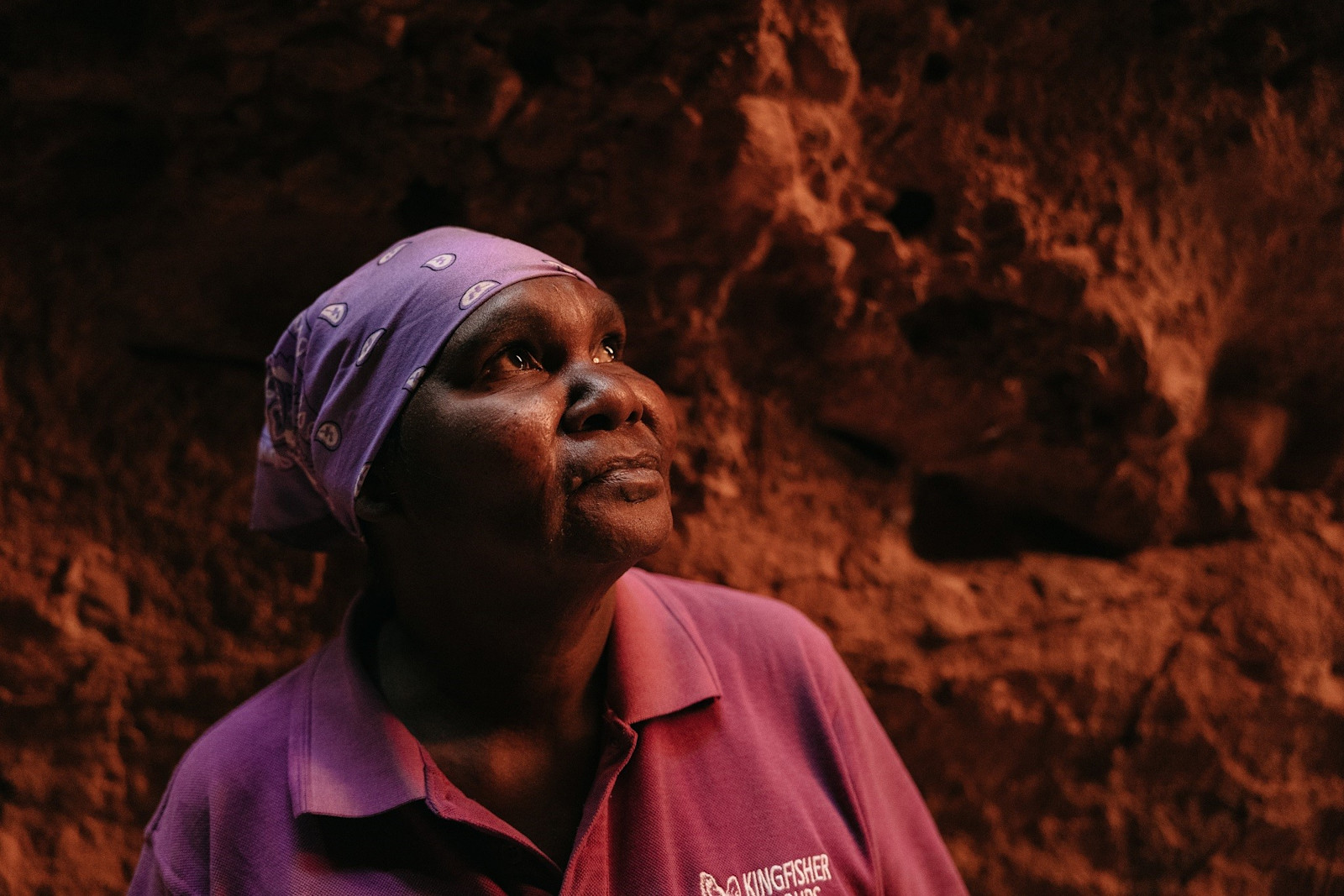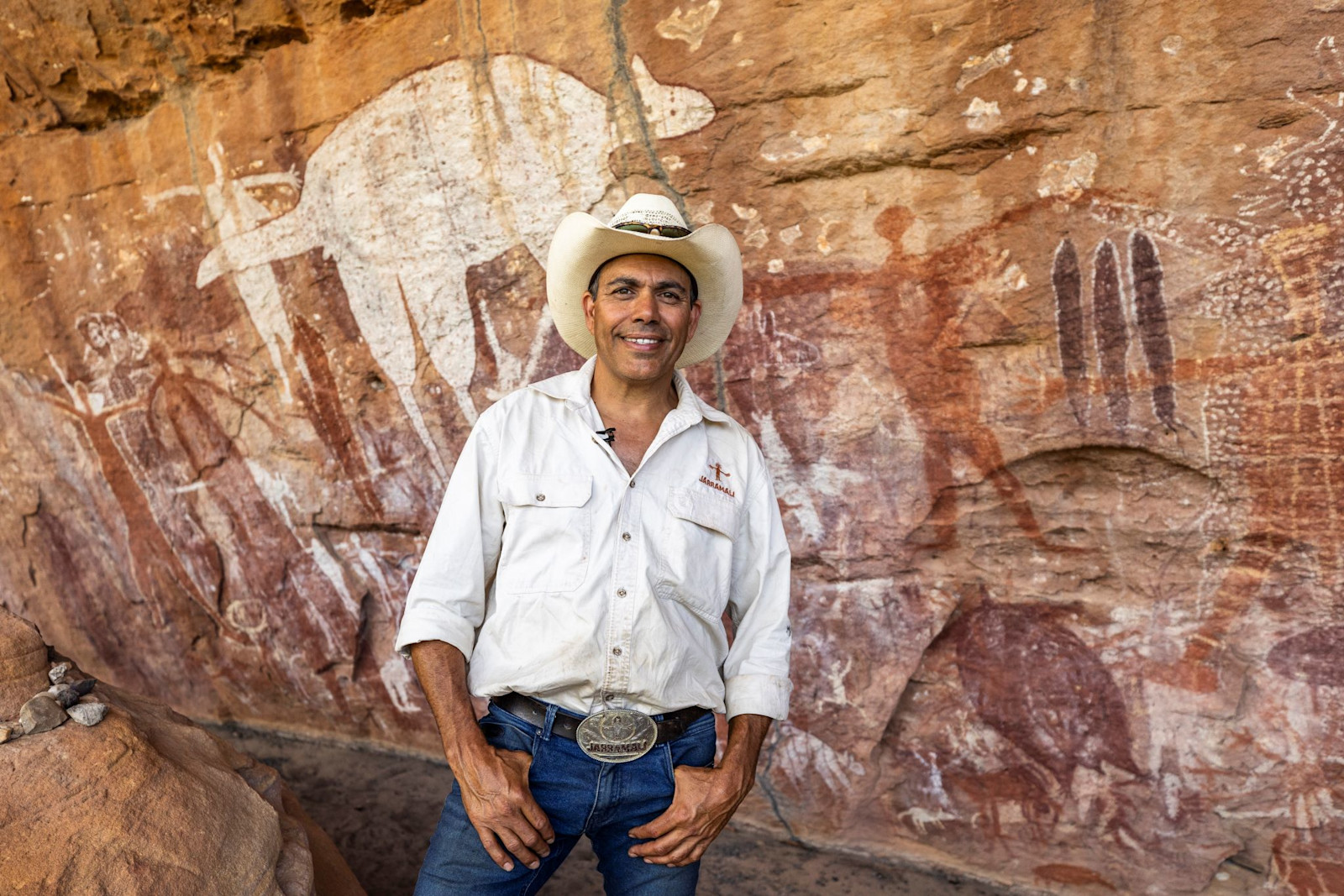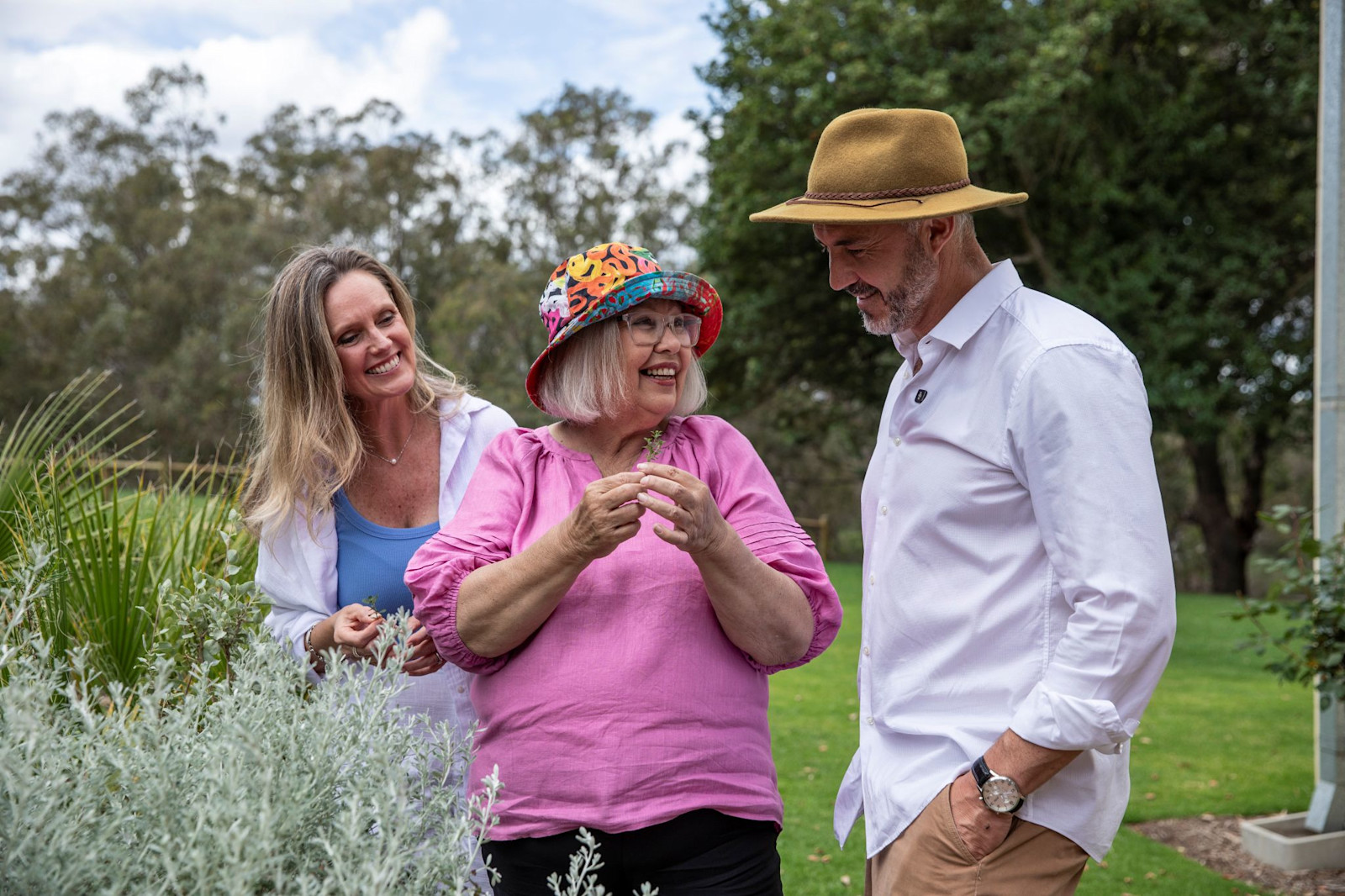Be immersed in Aboriginal cultures around Uluru & Alice Springs
It’s an authentic journey of discovery when you travel to the heart of Australia’s Red Centre with the land’s Traditional Custodians.
Central Australia, also known as the Red Centre, is the Northern Territory’s southernmost region, and a vast expanse surrounding the outback city of Alice Springs. At its heart sprawls one of the country’s best-known attractions – the sacred sandstone monolith that is Uluru (formerly known as Ayers Rock). Beyond this UNESCO World Heritage-listed icon, Central Australia is brimming with culturally significant landmarks, incredible Aboriginal art, dramatic landscapes, and a wealth of travel offerings that ensure your exploration of the Red Centre is memorable.
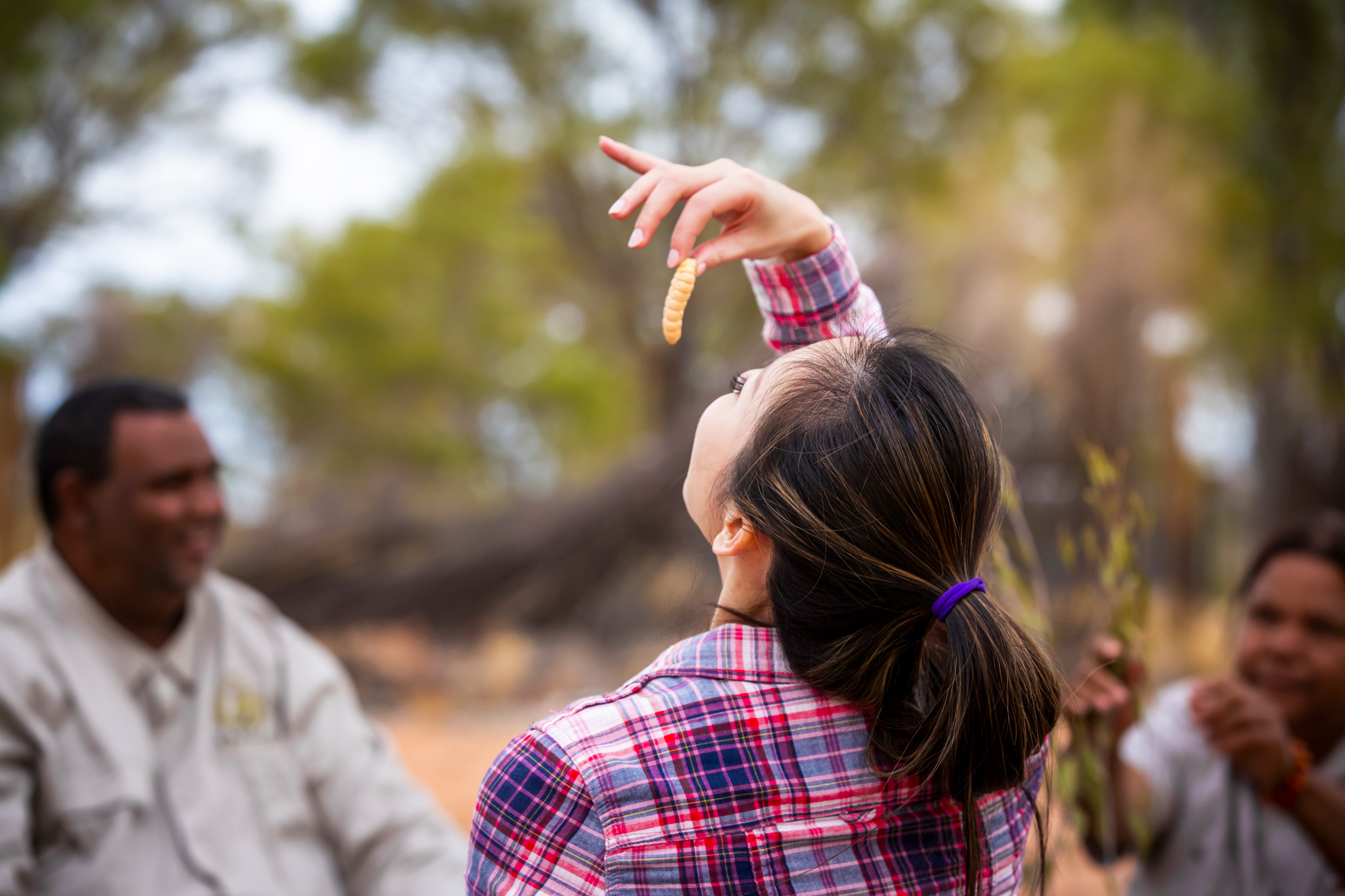
Karrke Aboriginal Cultural Tour, Watarrka National Park, NT © Tourism Australia
Get a dose of Aboriginal cultures at Kings Canyon
North of Uluru is the surprisingly lush Watarrka National Park, home to the mighty Kings Canyon. Here you can gain first-hand insight into the cultural importance of this outback oasis with Karrke Aboriginal Cultural Experience & Tours. On the one-hour Karrke Aboriginal Cultural Tour, learn about the traditional Aboriginal food known as bush tucker, as well as native plants used as ancient medicines for spiritual and physical healing, and sample the unusual (and surprisingly palatable) witchetty grub, a native insect that tastes like popcorn when cooked. You will deepen your understanding of the cultural significance of dot painting – the now world-renowned art style that originated in Central Australia – as well as learn how traditional timber implements like clapping sticks and weapons were created.
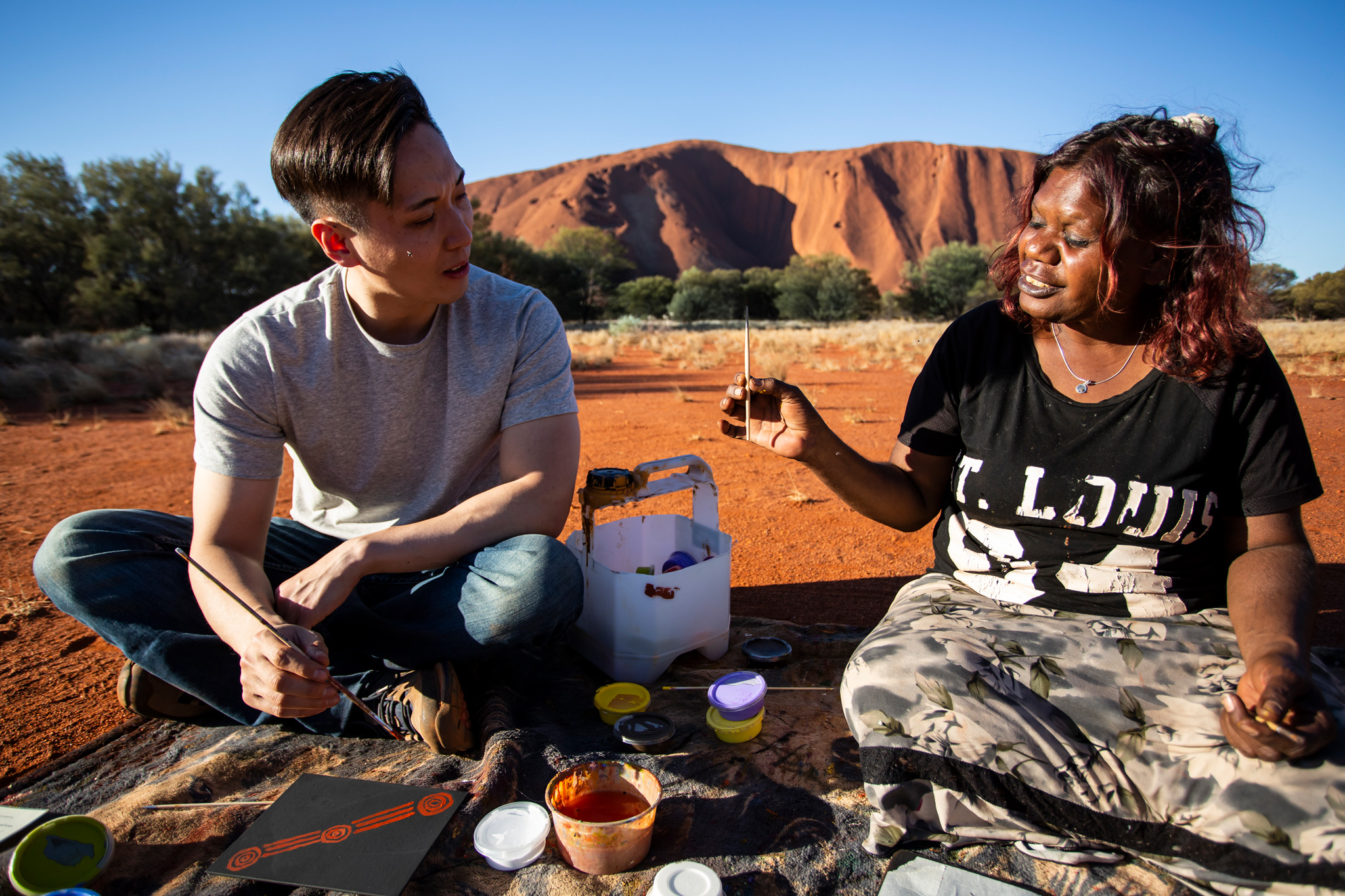
Maruku Arts, Uluru-Kata Tjuṯa National Park, NT © Tourism Australia
Choose from an array of Aboriginal experiences at Uluru
No cultural exploration of the Red Centre is complete without a visit to the not-for-profit art and craft corporation Maruku Arts. Owned and operated by Anangu people, Traditional Custodians of Australia’s central deserts, for more than 30 years, Maruku Arts exhibits works from some of the 900 Anangu artists in its collective. At its retail gallery at Uluru-Kata Tjuta National Park Cultural Centre, browse (and buy) some of Maruku’s extensive range of artworks, primarily paintings and wood carvings known as punu.
To really see, touch and feel the drama and scale of Central Australia’s rich culture, SEIT Outback Australia takes you to some of the region’s most magnificent and sacred landforms. SEIT’s Patji tour, for instance, named after the Aboriginal land it explores, takes you on an exclusive off-road adventure just south of Uluru. Travelling through Patji by 4WD with an Aboriginal guide, expect to learn about the cultural and historical significance of the area, as well as stories passed down for generations about how the Traditional Owners survived in this desert landscape. You may also have an opportunity to forage for witchetty grubs and other bush tucker and medicinal plants along the way.
SEIT’s cultural tours can also be booked through Voyages Indigenous Tourism Australia, offering an impressive portfolio of Aboriginal experiences around one of their most widely known properties, Ayers Rock Resort. Voyages is owned by the Indigenous Land and Sea Corporation, so profits are reinvested into Aboriginal training and development across Australia.
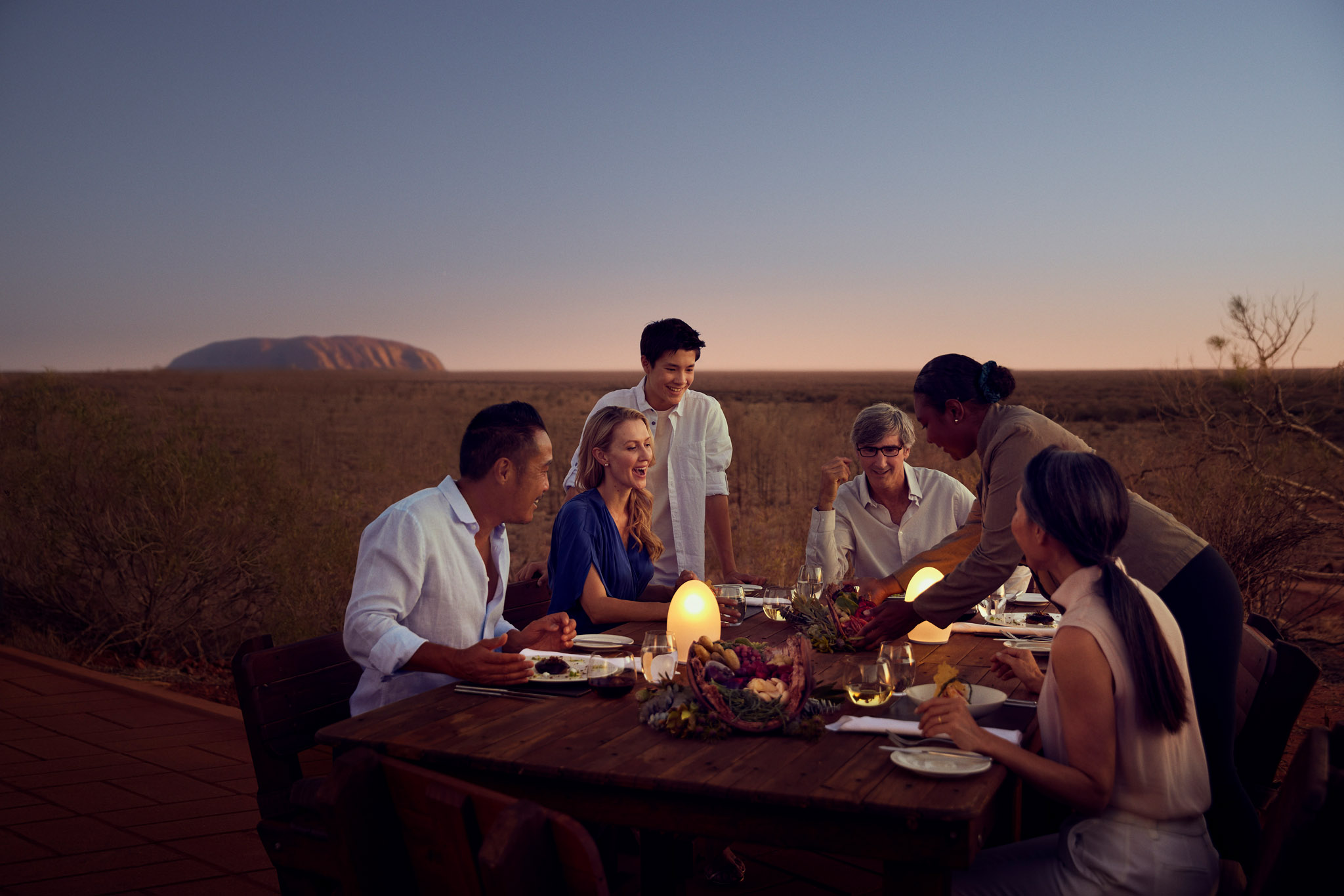
Tali Wiru, Ayers Rock Resort, NT © Tourism Australia
Embrace Aboriginal resort activities
Situated at the gateway to Uluru-Kata Tjuta National Park, Ayers Rock Resort offers a wide array of accommodation, from spectacularly located camping to the upmarket Sails in the Desert hotel. Partnering with local people and operators, the resort can also arrange memorable cultural experiences, from bush tucker walks to helicopter tours. However, one of the most decadent selections is dinner at Tali Wiru, the resort’s open-air restaurant overlooking Uluru and the domes of Kata Tjuta beyond. While a local Aboriginal storyteller shares insights about Anangu culture and history, you’ll be served a sumptuous four-course dinner, showcasing native flora and fauna and ancient herbs and spices.
